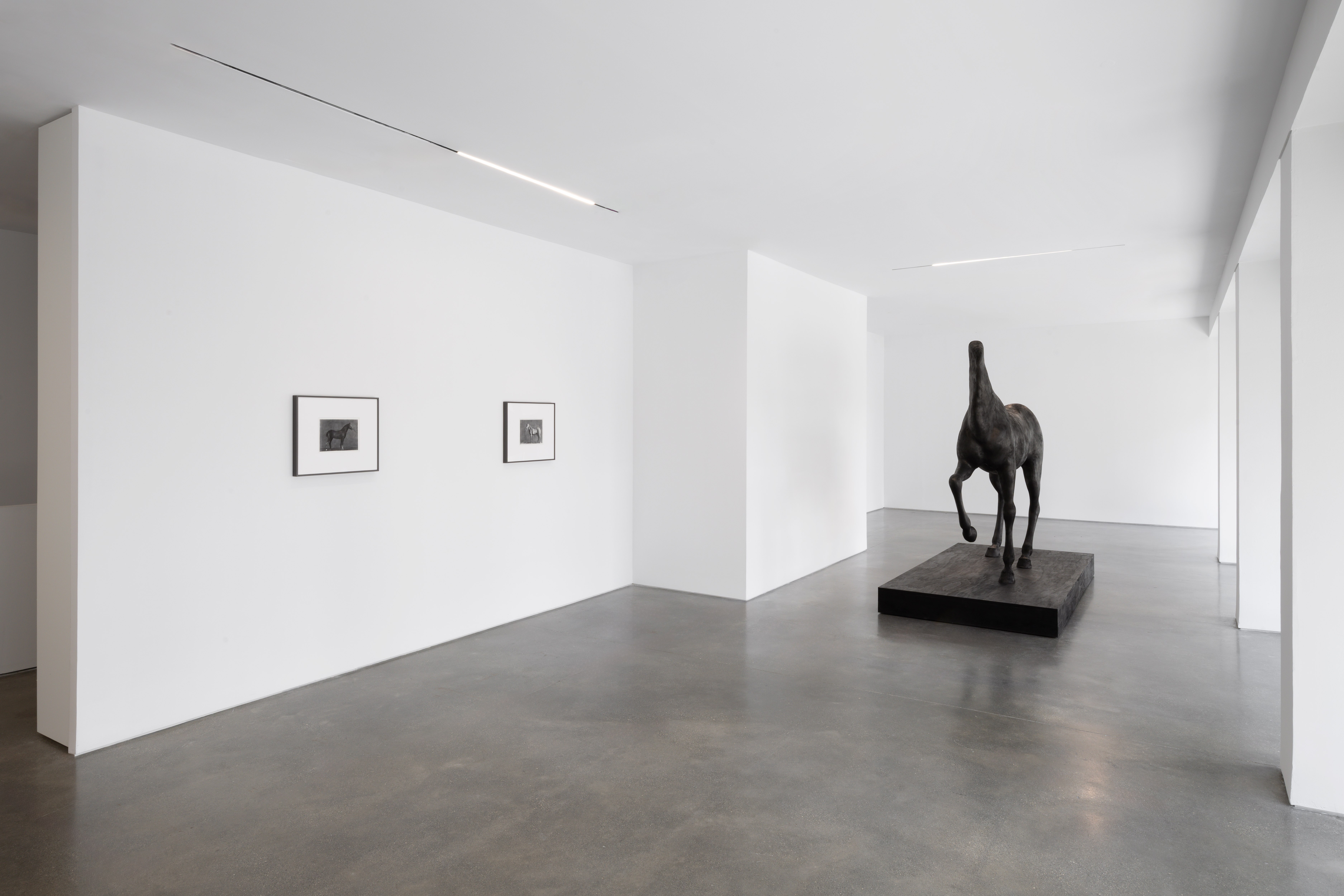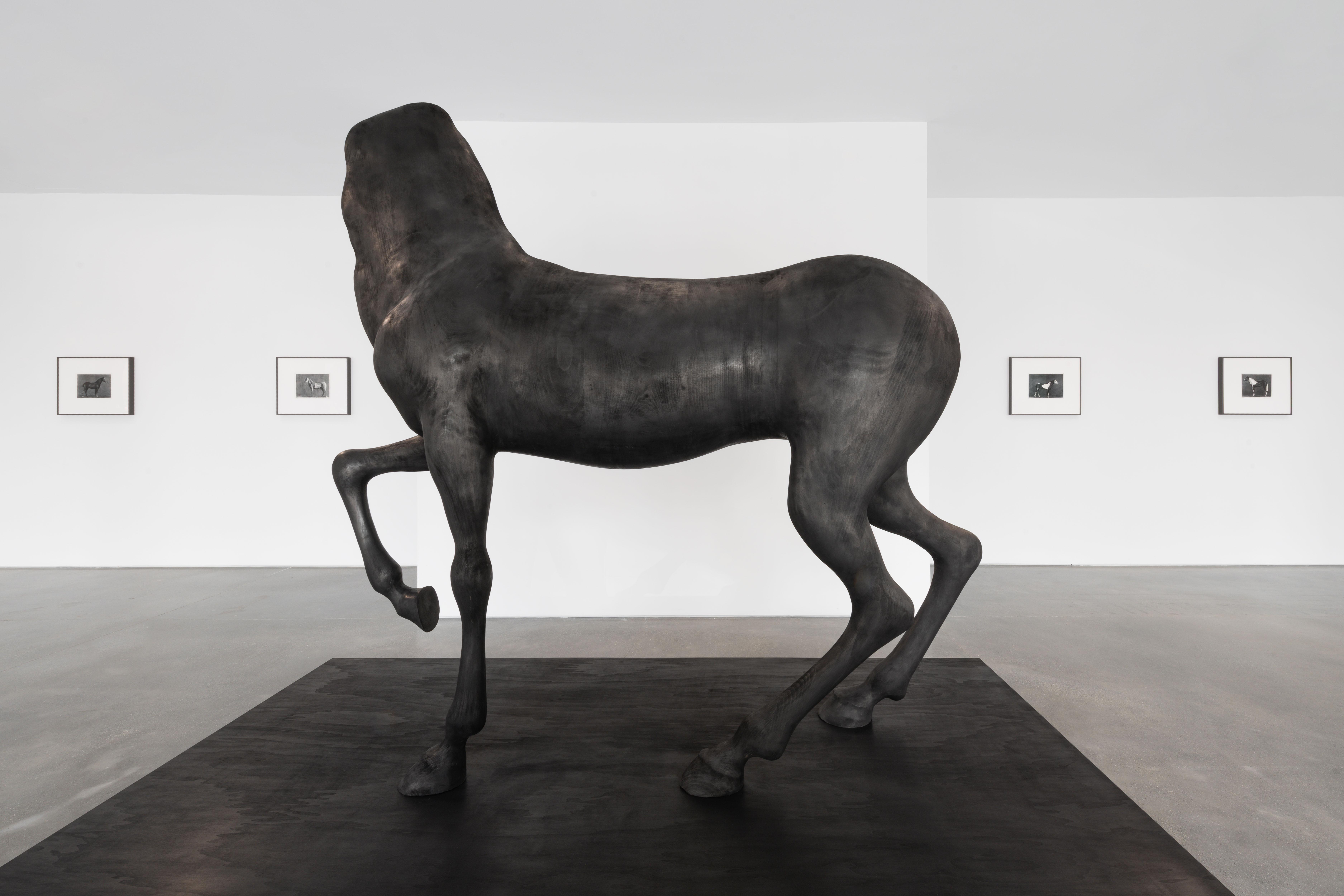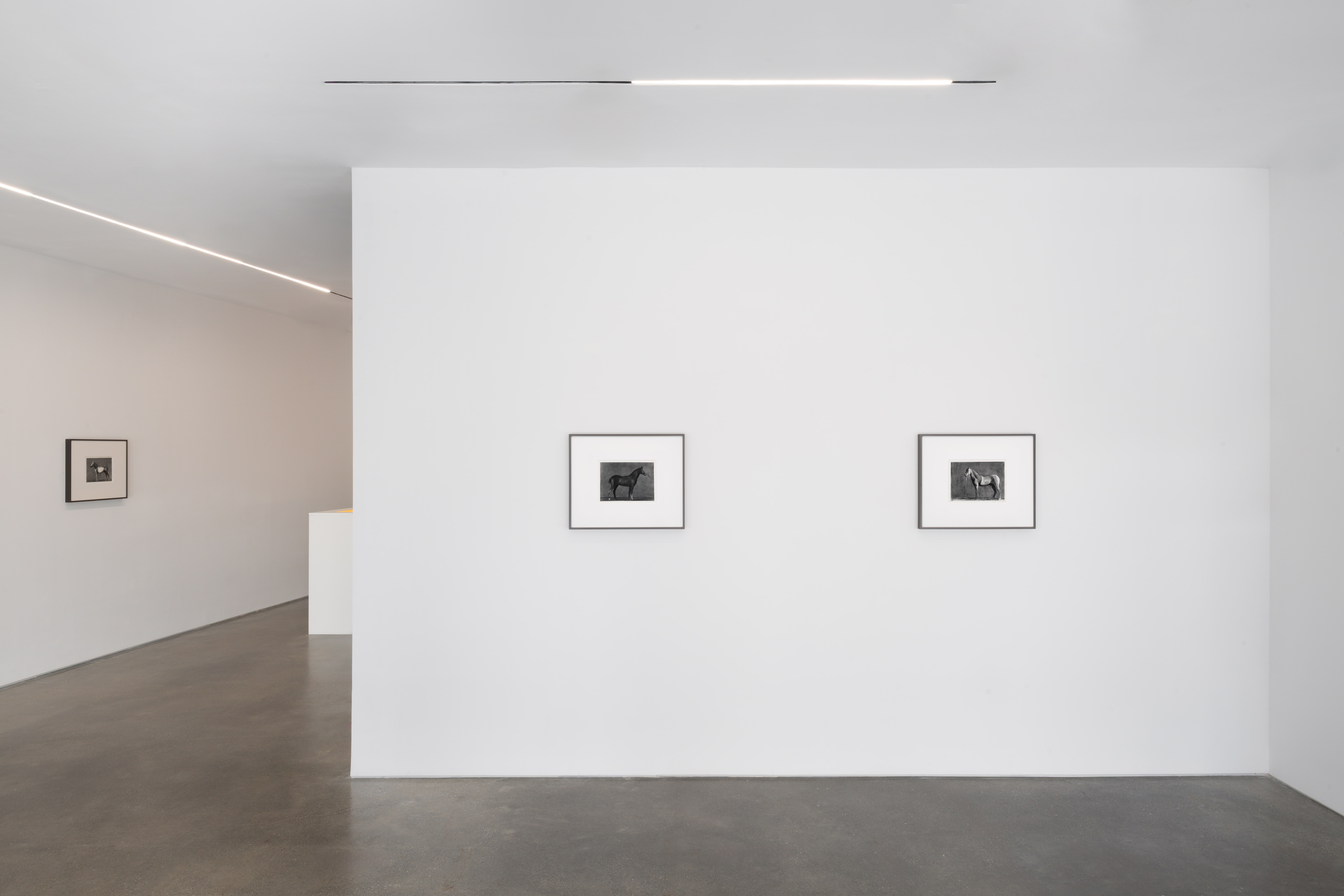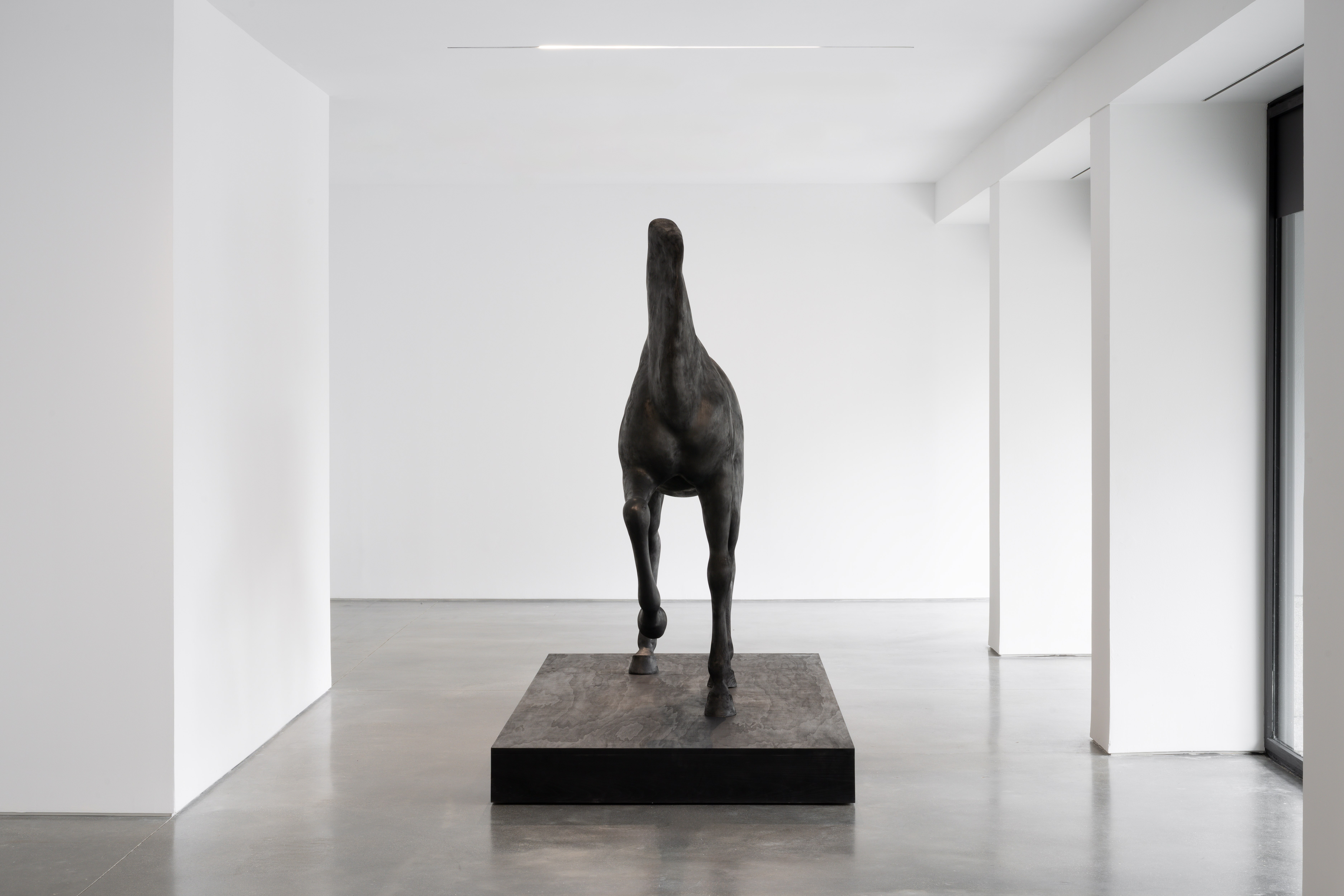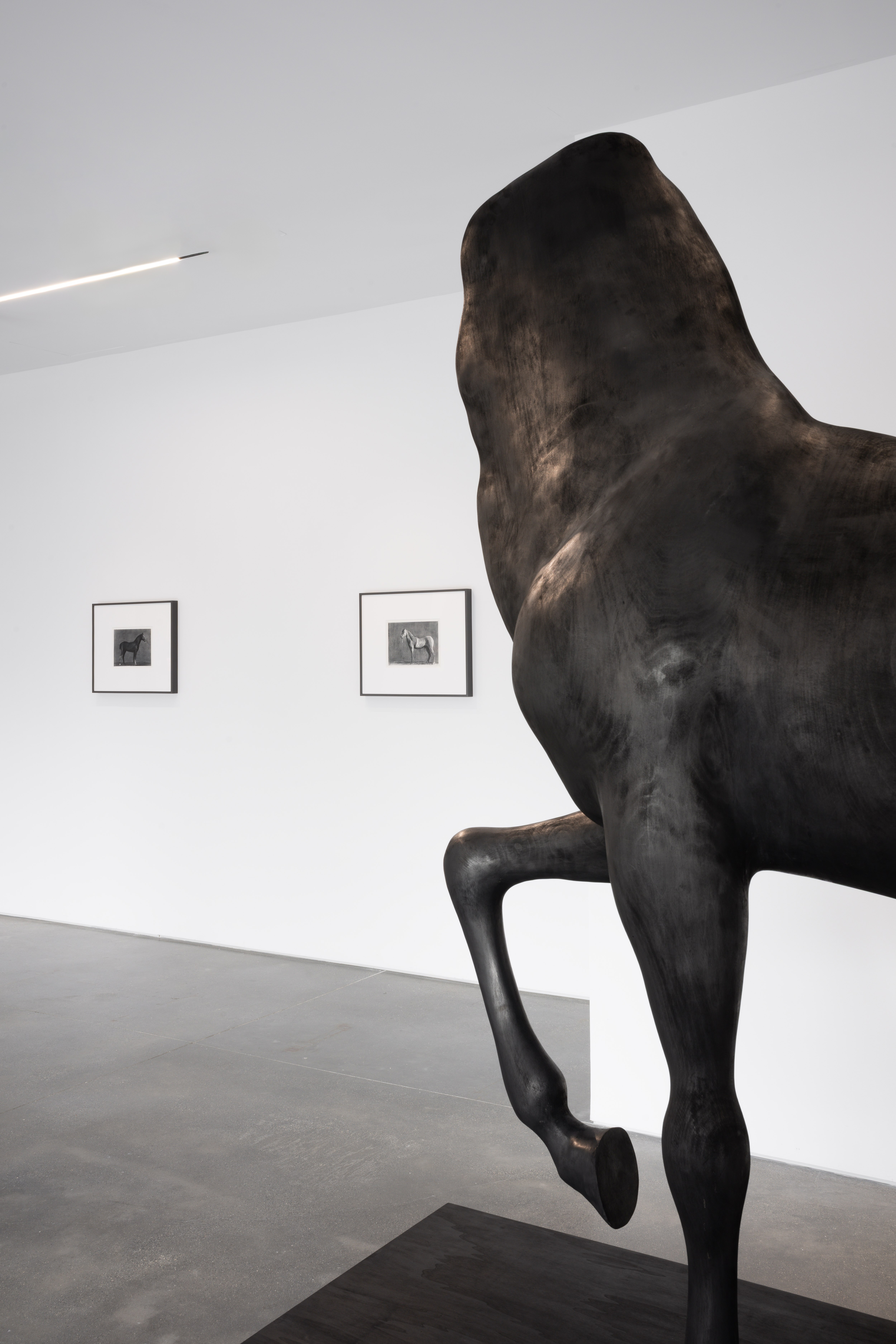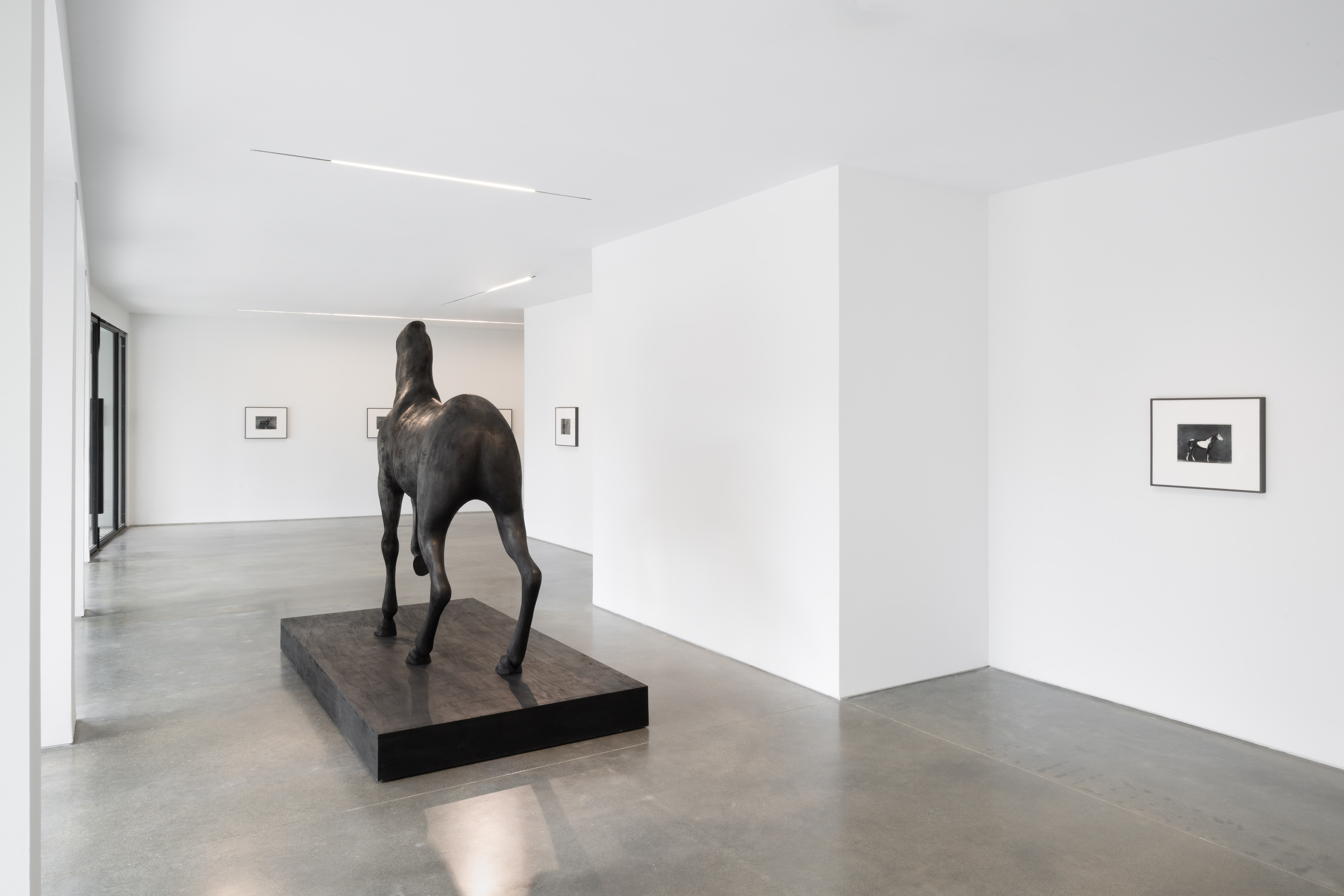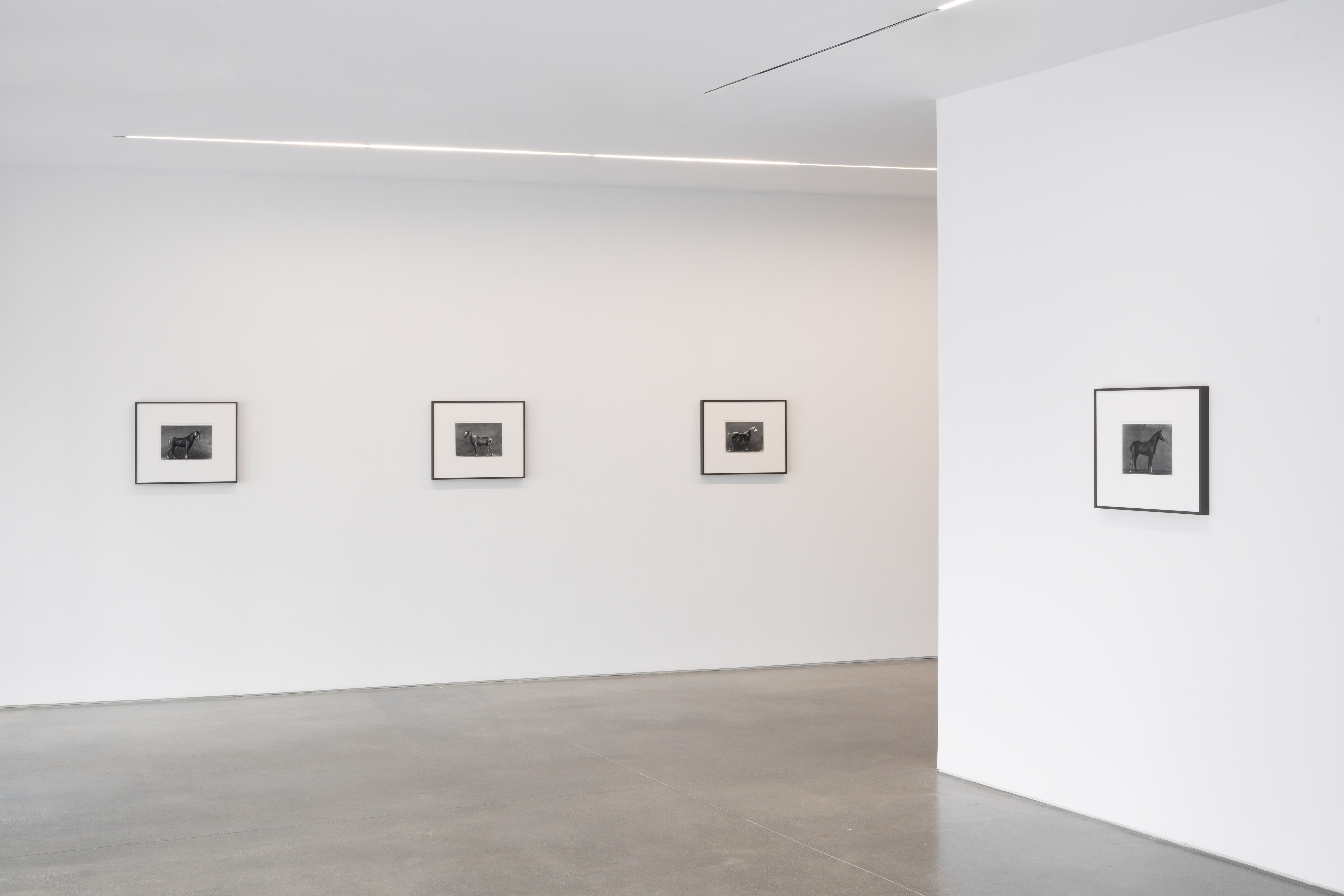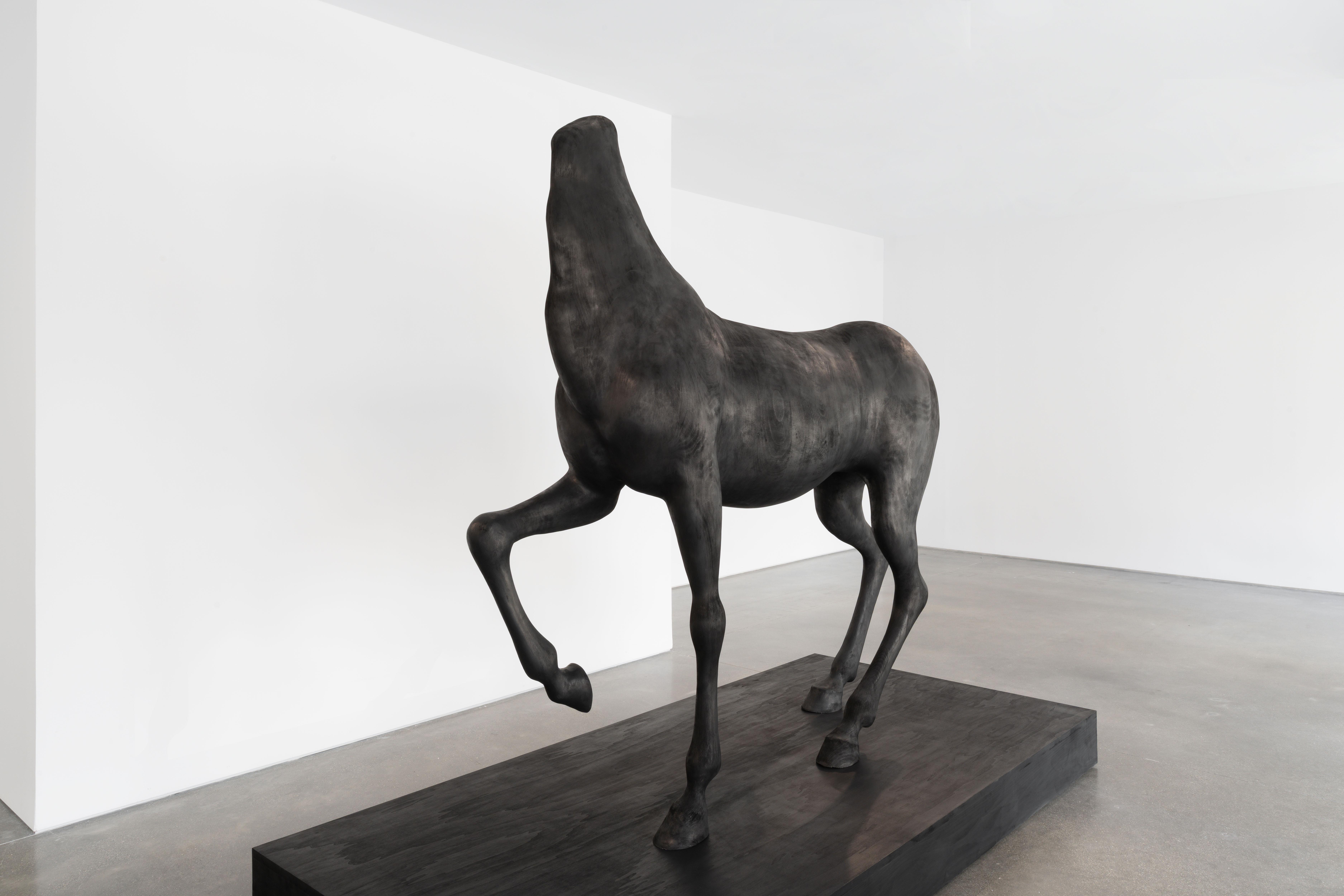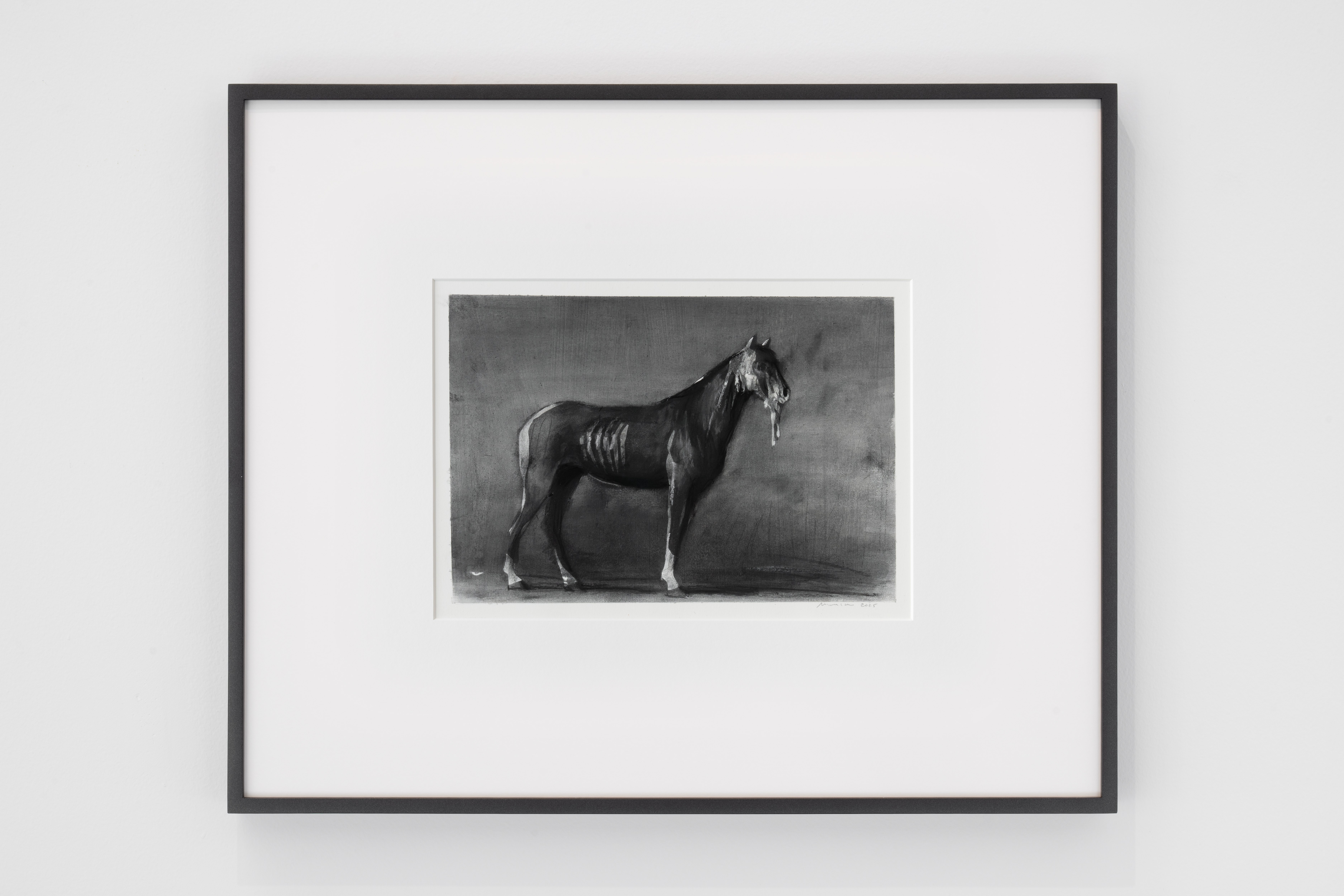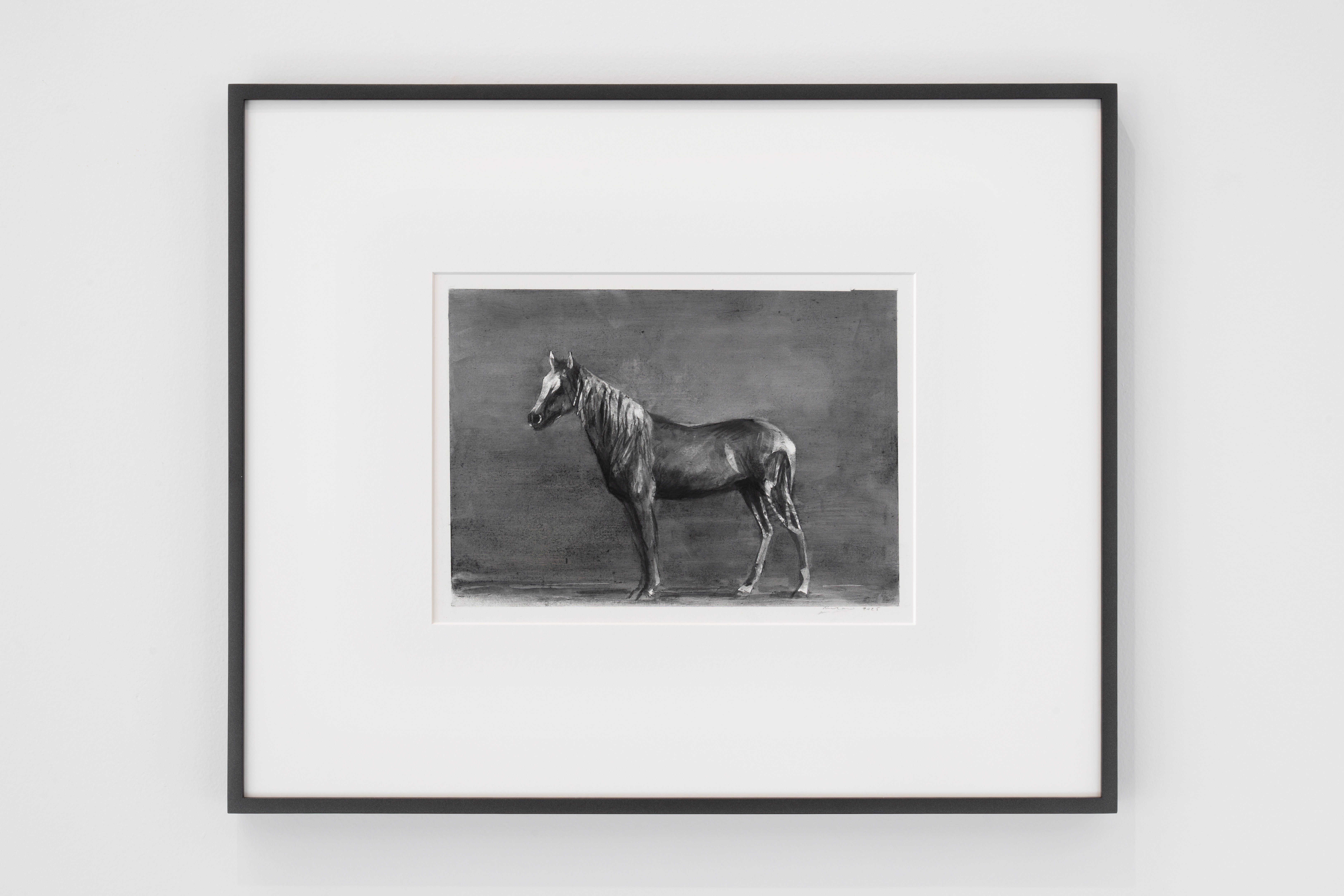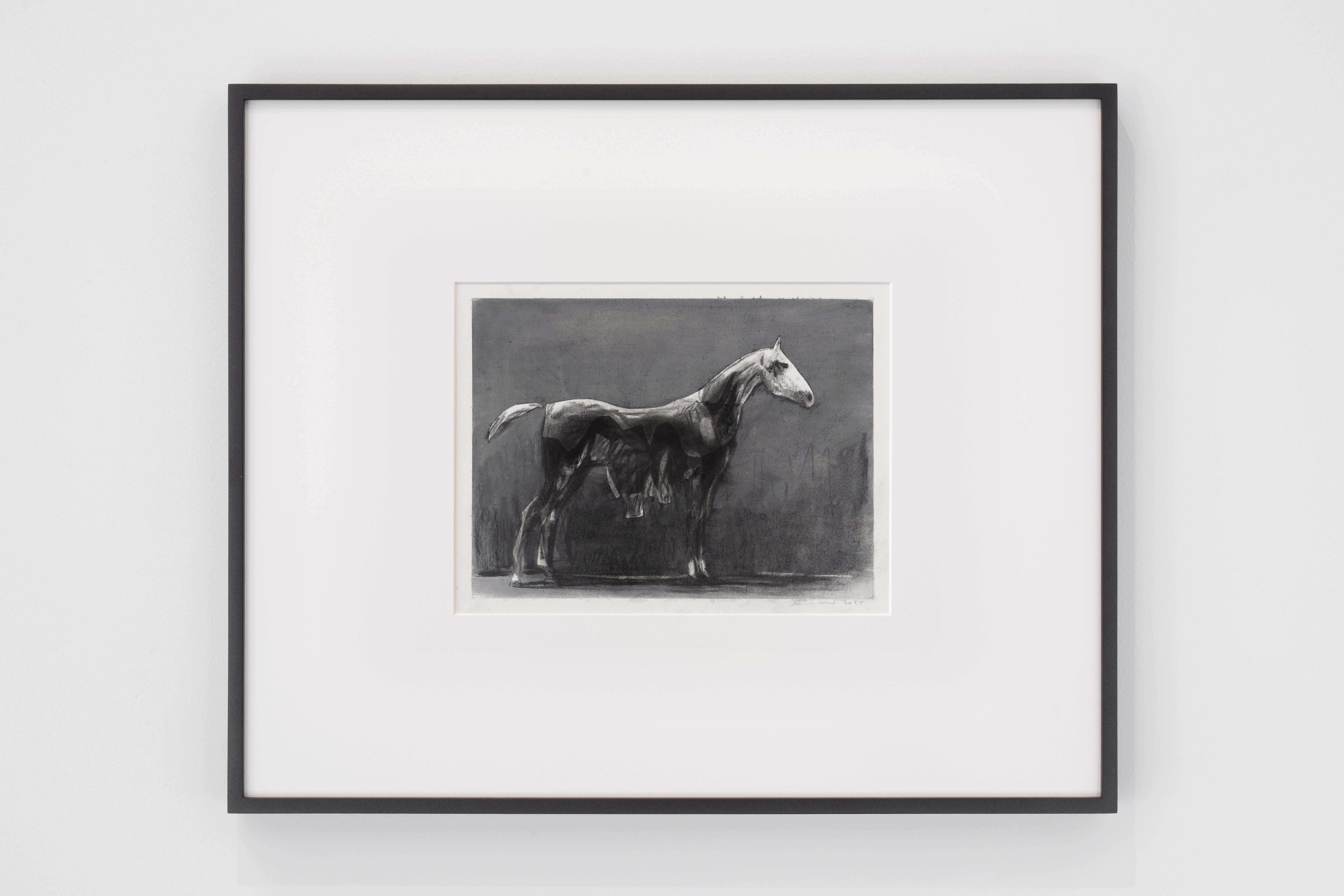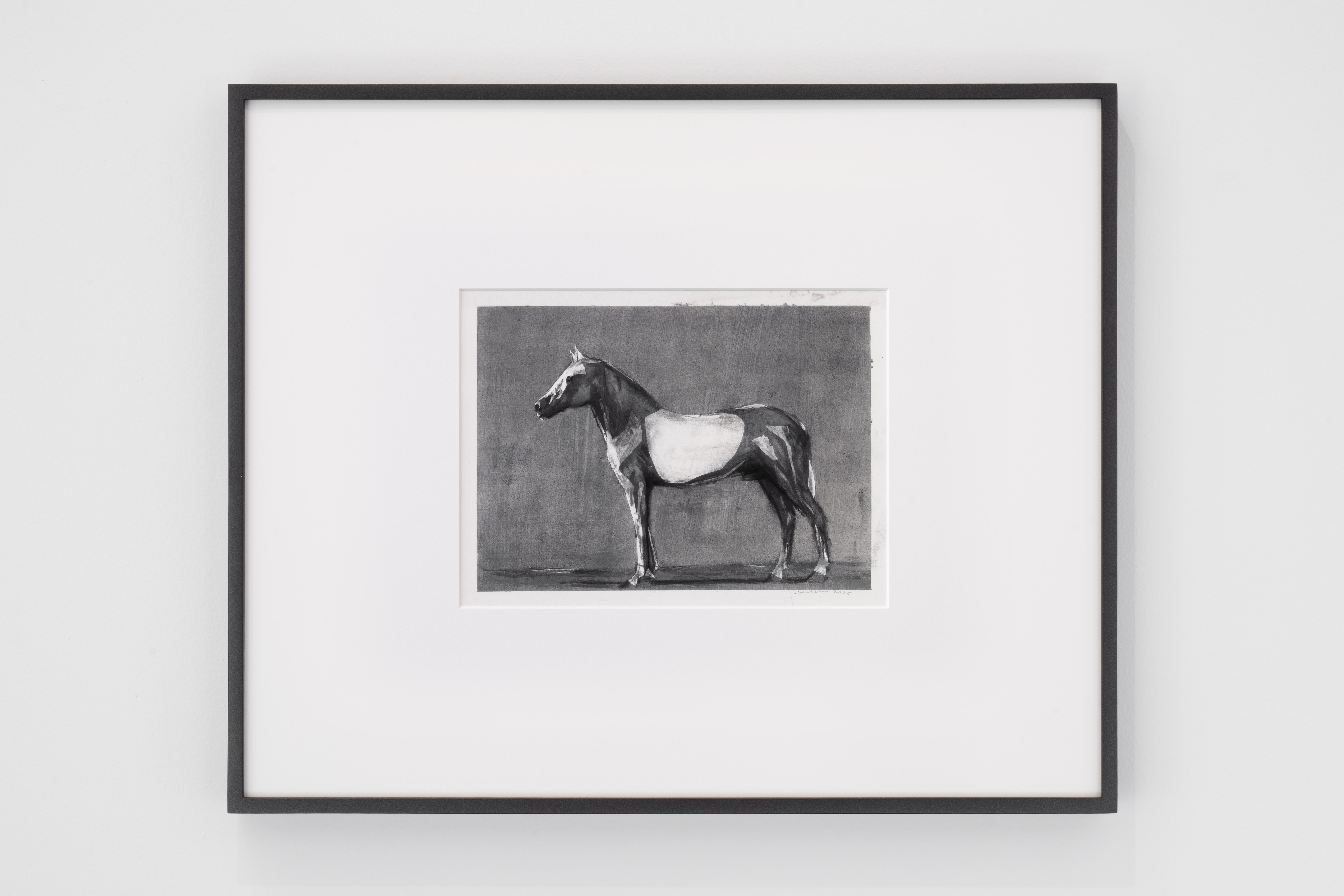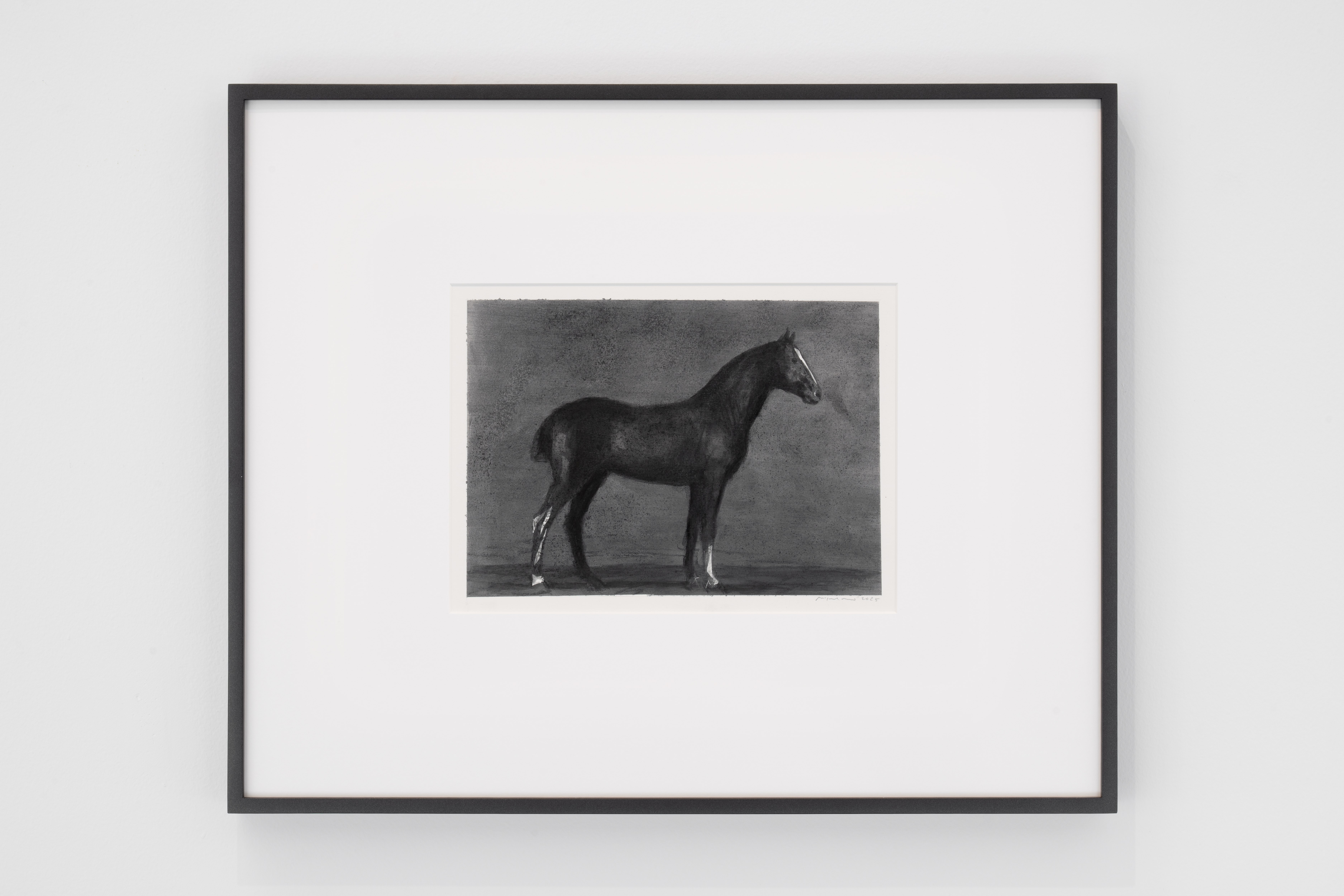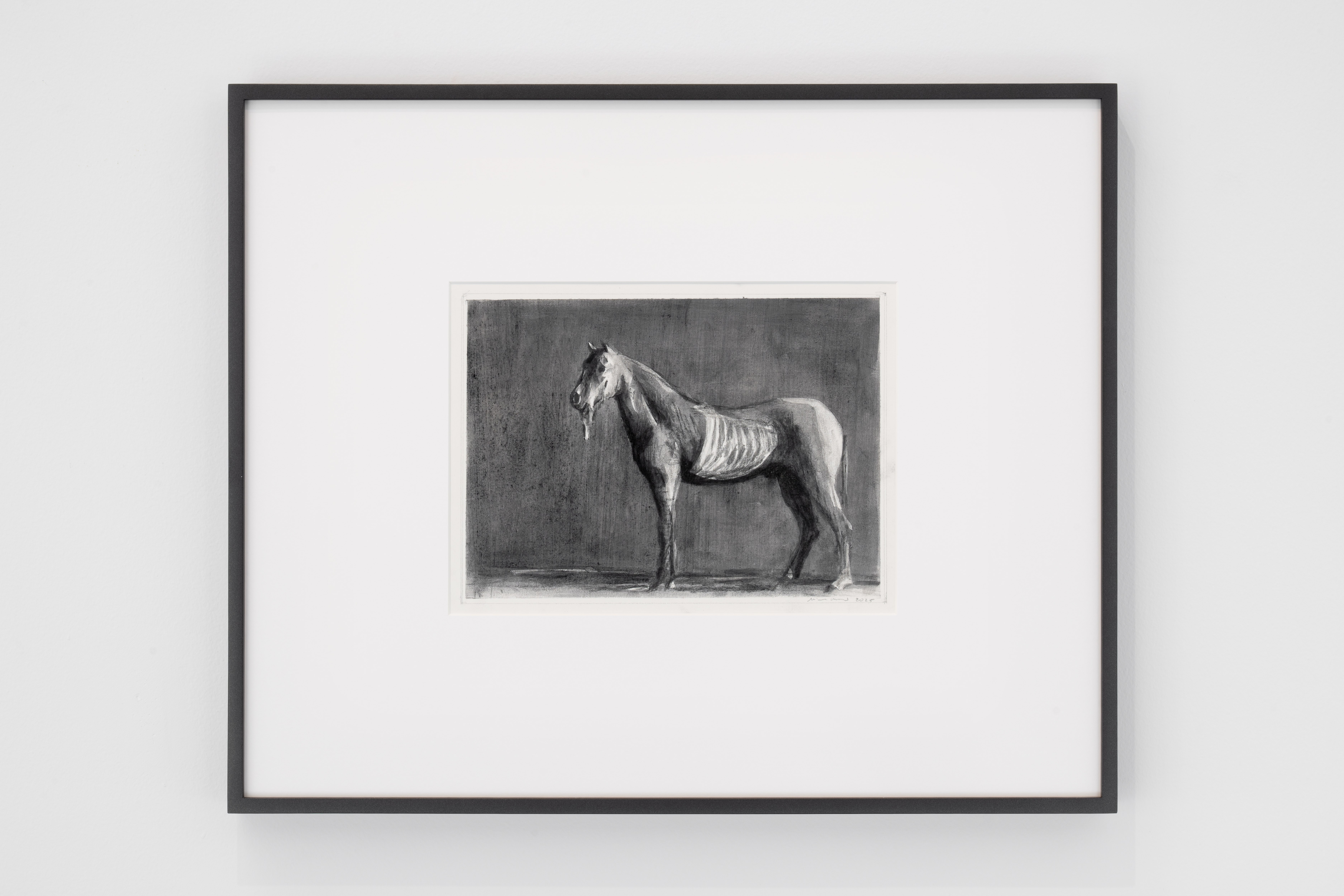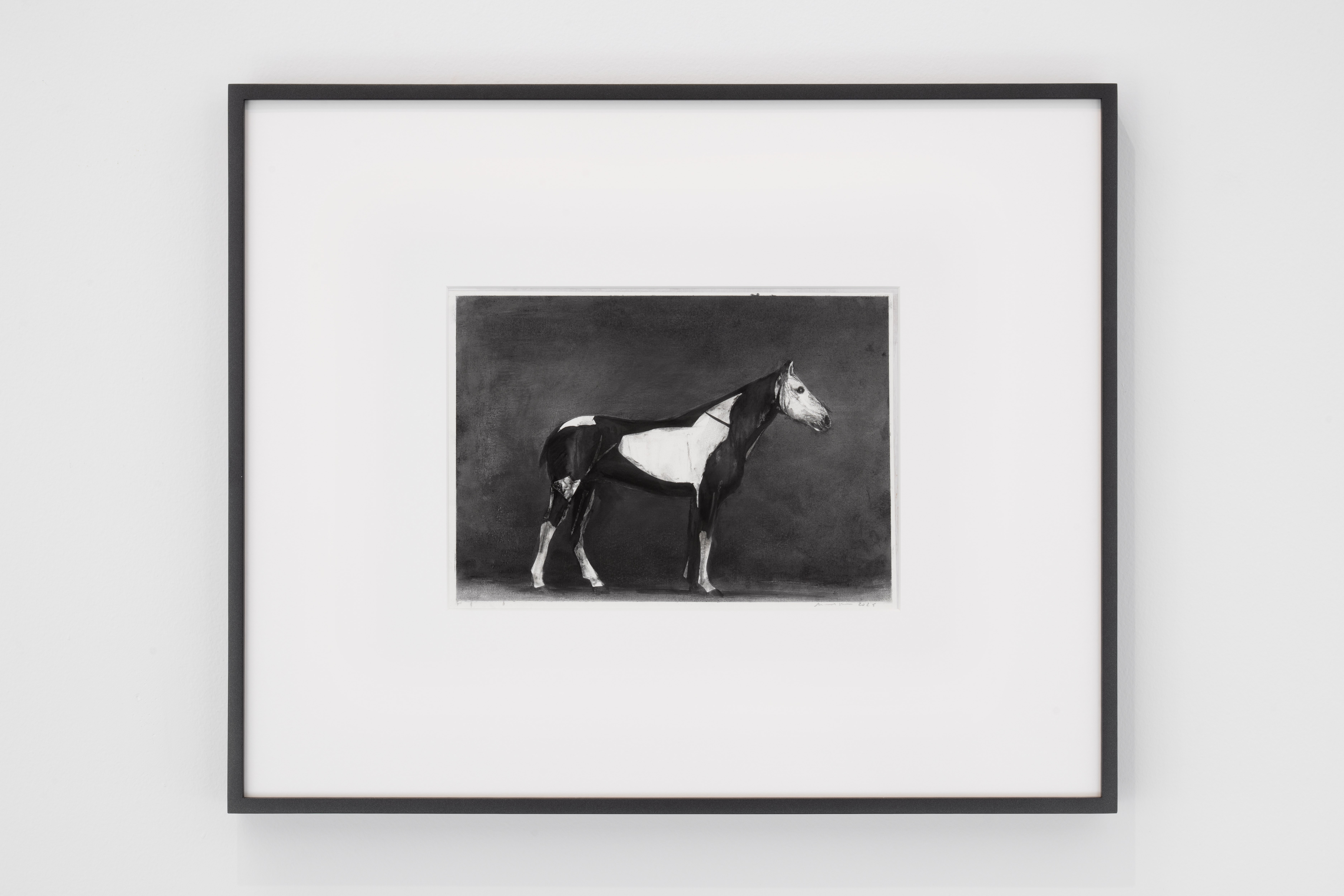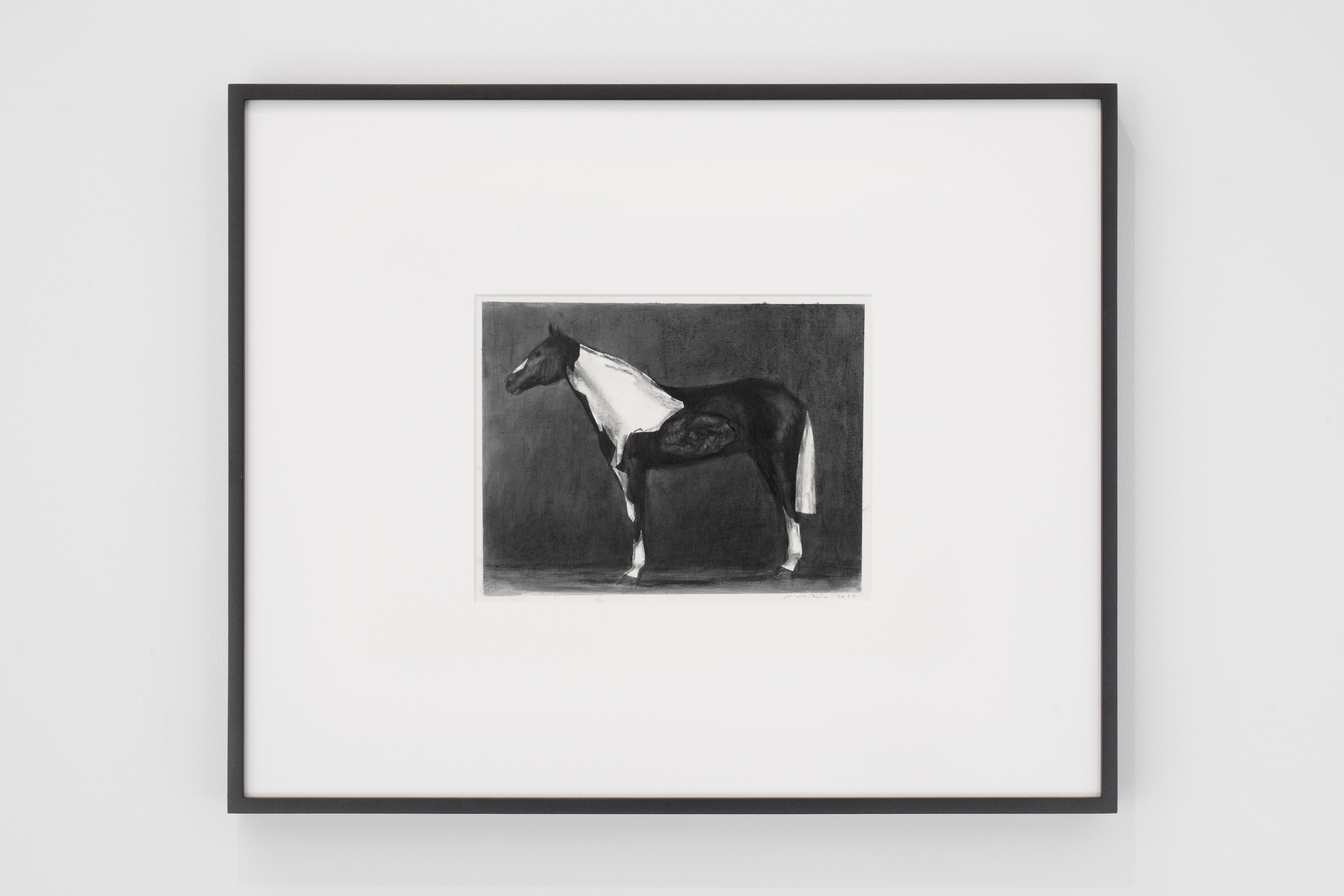Black Horse
Miguel Branco
Black Horse
Madrid
History has shown, since the appeal to humanist rationality, the subordinate role often assigned to animal populations, diminished and rejected by classicist discourses that pushed them toward the spectrum of the primitive and the untamed. Paradoxically, it was precisely in this place of otherness that the animal emerged as a force of resistance, allowing for the exploration of all that remained incomprehensible. Caught in this dichotomy, these groups are carefully selected by Miguel Branco for their vast field of argumentative and symbolic potential, addressing psychological, historical, and formal aspects to invoke, in their open nature, the promise of metamorphosis or adaptation. The animal thus becomes a central field of inquiry in his work, escaping purely ecological and naturalistic categories to introduce, in its quality as an undefined “Other,” a subtle reflection on some of the most pressing questions of a contemporaneity marked by unease and multiple threats.
It is under this premise that the figure of the horse, a symbol of power and glory in the world, of elegance and noble status, an intermediary between life and death, and a sign of intuition and spirituality, emerges as the central motif in Black Horse, Miguel Branco’s new exhibition at Pedro Cera. By uniting drawing and sculpture, the exhibition not only revisits the anachronistic opposition between tradition and modernity, as it evokes the apprehension triggered by the unfamiliar within the familiar.
Inspired by the anatomical albums of George Stubbs (1724–1806), the horses series, developed continuously throughout Miguel Branco’s practice, establishes a visual syllabary shaped by sequential stages of transformation, where each drawing represents a composite body formed through gestures of fragmentation, agglomeration, and hybridity. In the layering of multiple references, the once-celebrated animal reveals its synthetic, dissected and cadaverous structure, composed of bones, muscles, and additions that convert it into a prosthetic machine positioned between the organic and the artificial. Through gestures that are both rapid and meticulous, rejecting the tradition of the finished drawing, each iteration of the horse is brought into a clinical present, emerging as a mutant, mechanical entity that echoes a desire to overcome the biological body in favor of technology, a drive propelled since the 19th century by the emergence of new industrial forces that complicated classical notions of origin and individuality.
Mysterious and unsettling, these images shift from paper toward the elegant sculpture, a majestic equestrian figure in painted and burned wood, appearing as a headless animal, deprived of identity and sensory access. A messenger from a chthonic or subterranean world, the animal closes inward upon itself in its cryptic nature, remaining suspended in a haze that evokes the disquieting atmospheres of Goya’s painting, where reason gives way to delirium, absurdity, and darkness. Its presence simulates a form of disturbance in the face of what was once recognizable, claiming a metaphorical reading of a time of conflict and unpredictability.
With latent tension, Black Horse places the viewer in a symbolic limbo between what escapes and what remains suspended. In both detail and totality, the works establish a space of anticipation – what Jacques Lacan described as en souffrance (1) – to express an unresolved sensation, awaiting recognition in the absence of articulation. By gradually stripping elements of the collective imagination of their conventional definition, Miguel Branco’s work confronts us with a form of existential disquiet, resonating within a present shaped by image saturation, fractured narratives, and the erosion of traditional symbolic frameworks.
—
(1) From 1952 to 1980, French psychanalyst Jacques Lacan presented annual seminars in Paris, later collected and edited by Jacques Alain-Miller. The term “en souffrance” appears in the XVII seminar, L’envers de la psychanalyse (1969-70).
